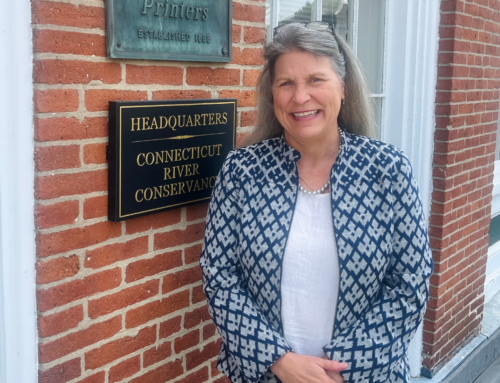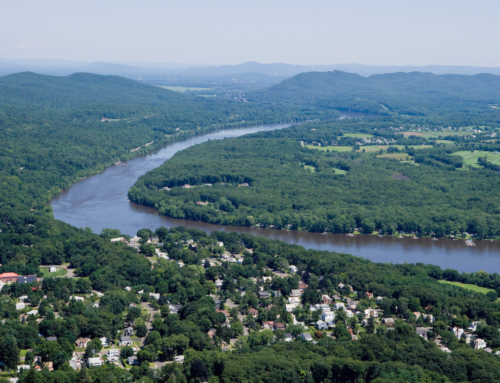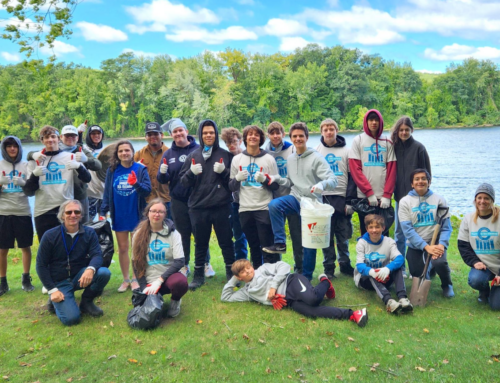FOR IMMEDIATE RELEASE
Saxton’s River, VT. April 9, 2014. – The same day as the Public Service Board’s March 28th endorsement of the settlement agreement between Entergy and the State of Vermont that outlined the closure and decommissioning of the Vermont Yankee nuclear power station, Entergy sent a bristling uncooperative letter to the VT Agency of Natural Resources (ANR) that all but threatens an appeal if they aren’t allowed to continue operating under its flawed pollution discharge permit from ANR. This comes despite Entergy Vice President Michael Twomey’s sworn testimony to the Public Service Board that they would “cooperate with ANR to address any issues related to the VY Station’s thermal discharge.”
“Here we go again,” noted David Deen, River Steward with the Connecticut River Watershed Council (CRC), “saying one thing and then doing another. Are we surprised? Nope. Even the Public Service Board in their recent ruling took the time to outline the number of times that they felt Entergy was not reliable, didn’t keep their word, and didn’t do what they were supposed to.” This is disappointing considering the Public Service Board’s ruling noted that, given the short time frame left for this facility and the terms of the MOU, Entergy could be realistically expected to be a fair partner.[1]
Entergy admits permit allows river to get hotter than permit allows; shrugs.
CRC and Vermont Natural Resources Council (VNRC) clearly demonstrated in filings with the Public Service Board that, based on Entergy’s own data, the Connecticut River below Vermont Yankee’s pollution discharge is frequently hotter than the permit allows. During the critical spring and fall American shad migration, actual temperature increase at the fish ladder at Vernon Dam exceeded the permitted temperature rise up to 75% of the time, and by as much as 5-7 degrees Fahrenheit. Entergy does not dispute this, but continues to say it is not their problem and there is nothing they can, or will, do about the situation.
“It is disappointing that a sophisticated company like Entergy keeps trotting out this tired claim that so obviously flies in the face of how the Clean Water Act works,” said Andrew Fisk, Executive Director of the Connecticut River Watershed Council. “Entergy seems to think they are eligible for some kind of pass that ignores other sources of temperature increases, including the sun.”
The Clean Water Act allows for pollution (thermal/hot water in this case) to be discharged, provided that the receiving water body (the river in this case) meets specific criteria and standards. The law is very clear that the amount of pollution permitted to be discharged has to consider all the other sources of that pollution so that the river’s aquatic residents are protected from the total harmful effects of thermal pollution.
ANR now understands that Entergy’s long-expired permit, as well as Entergy’s pending application to obtain a new permit, do not do what the law requires. They have agreed to fix that problem. Documents obtained from the Agency indicate that they have proposed to eliminate the use of a flawed mathematical formula (“Equation 1.1”) to measure compliance and instead use actual river temperature as measured at a longstanding monitoring station used by Entergy (“Station 3”). The Agency also appears to be introducing new biological windows that correspond to the actual times that fish are migrating up and down river and a temperature limit during the time fish are actually travelling up the fish ladder at Vernon Dam.
Entergy forgets there is this thing called the Internet and email
One of the more laughable complaints laid out by Entergy related to the discussion about stopping thermal pollution when fish are actually migrating through the fish ladder at Vernon. Entergy claims it cannot possibly stop the pollution since it does not have access to information concerning fish migration through the fish ladder. “If Entergy’s high powered lawyers had bothered to spend 30 seconds asking ANR about this, they would have found that there is a robust communication network between the operators of fish passage structures and state fishery biologists who monitor migrations throughout the season and the watershed,” noted an exasperated David Deen. “These folks use email to regularly provide status updates, even to the general public. If Entergy can be expected to run a nuclear power plant, they should be able to use email.”
[1] For the Board’s discussion on this matter refer to pp 37-41 of its March 28 order. Available at PSB website.Entergy’s letter and ANR’s reply available at: ctriver.org/telling-vermont-yankee-to-cool-it
For more information:
David Deen, CRC River Steward 802-380-9228, ddeen@ctriver.org Andrew Fisk, CRC Executive Director 413-210-9207, afisk@ctriver.org###







